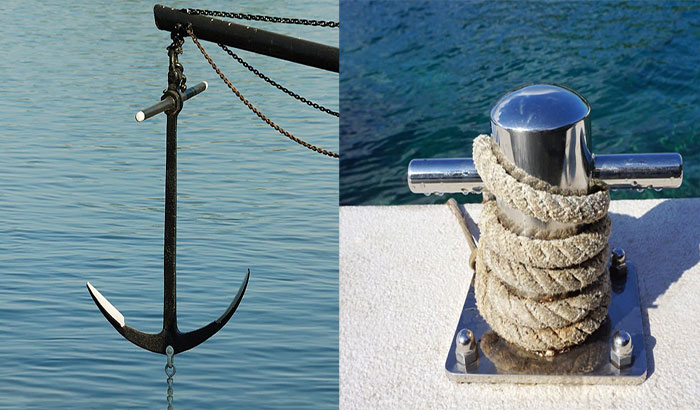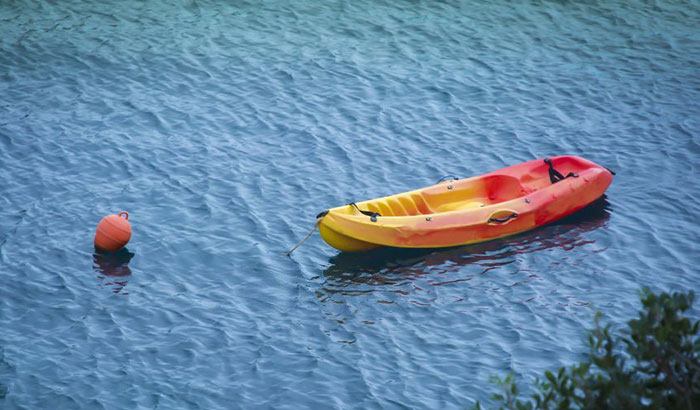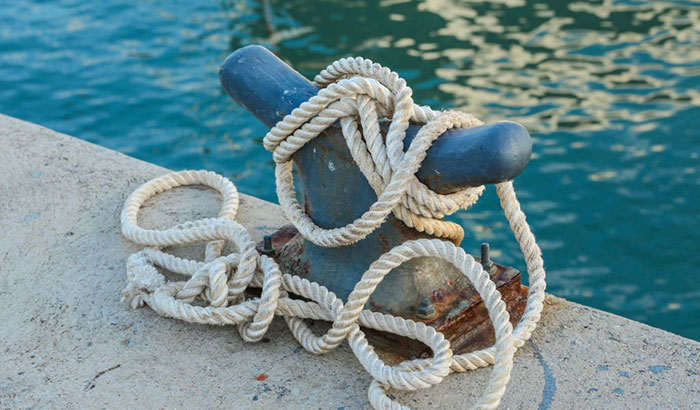Mooring and anchoring are both methods of mooring a boat, although they differ in their technique of attachment and purpose. Indeed, you must determine whether the conditions enable you to moor or anchor your boat.
Mooring involves attaching the boat to a permanent structure, such as a dock or a piling. Anchoring attaches the boat to a temporary object, such as a weight or a tree stump. Read on to know more.
What is Mooring?
Mooring is a technique used to secure a boat or ship to a pier, dock, or other permanent structure. Mooring lines are attached to the vessel and then secured to the dock with anchors, cleats, or bollards.
Mooring secures the vessel in place and prevents it from drifting away. Mooring systems can also be used to stabilize a vessel in wind and wave conditions.
There are several types of moorings, including conventional, pile, and rack.
- Conventional moorings use anchors and cables to secure the vessel
- Pile moorings use poles driven into the seabed
- Rack moorings use floating racks that are attached to the seafloor with screws or bolts
Mooring systems are an important part of maritime infrastructure and are used for a variety of purposes, including berthing, cargo handling, and ship repairs. They are also used to protect sensitive habitats and marine ecosystems.
The color of the buoy should also notify you of the type of mooring:
- Yellow buoy – Licensed private moorings
- Pink buoy – Free-of-charge mooring open for the public (24/24)
- Orange buoy – Licensed business moorings (for commercial boats)
- Red buoy – Mooring locations for boating club members
- Blue buoy – Police’s emergency mooring
Advantages of Mooring
Mooring systems have a much smaller environmental impact than other anchoring methods. This is because they use far less hardware and cause less damage to the seabed.
Mooring systems are quick and easy to deploy, which makes them ideal for use in busy waters or areas with limited space.
Mooring systems can be used in a variety of different applications, including offshore wind farms, oil and gas installations, and marine research facilities.
Mooring systems offer a high degree of safety and stability, which is particularly important in hazardous or environmentally sensitive areas.
What is Anchoring a Boat?
Anchoring a boat is a process that uses a heavy object to keep a boat in one place. Anchors can be made from many different materials, but most are either metal or concrete.
Anchors are usually attached to the boat with a chain or rope. When the anchor is dropped into the water, it creates drag on the boat, which keeps it in place.
There are many different ways to anchor a boat. Some people use anchors that hook onto the bottom of the water, while others use anchors that sit on top of the water. There are also different types of anchors for different types of boats.
For example, there are anchors specifically designed for sailboats, and anchors specifically designed for powerboats.
It’s important to note that you cannot anchor near these locations:
- Old shipwreck regions
- Shallow rocks and reefs
- Banks, bomboras, and shoals
- Shallow areas with sensitive seagrasses
- Navigation channels
- <200 meters distance from underwater cables
Advantages of Anchoring a Boat
Anchoring a boat is simple and secure. When you anchor your boat, you drop an anchor into the water and then tie your boat to the anchor. This keeps your boat in place, even in high winds or rough seas.
Anchors also provide stability for boats in docking areas.
Anchors can be made from a variety of materials, including concrete, steel, and iron. They come in a variety of shapes and sizes, so you can find one that is perfect for your boat. Anchors are also relatively cheap, making them an affordable option for boaters.
Anchoring is less restrictive than using a mooring; you can move your boat around as you please.
Anchoring is less likely to damage your boat than using a mooring. If you accidentally hit your boat against the mooring, it could cause expensive damage.
Conclusion
So, which is better: anchoring or mooring? The answer depends on your needs and what type of boat you have.
If you need to stay in one spot for a long time, or if your boat is susceptible to drifting in strong winds or currents, then mooring is the better option. If you only need to stay in one spot for a short time, or if your boat is able to handle strong winds and currents, then anchoring is the better option.
Mooring and anchoring are both useful ways to secure a boat, but they serve different purposes and have different advantages and disadvantages. Mooring is more secure and easier to use, while anchoring is less secure but can be used in more places.



